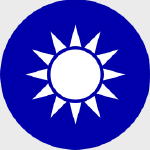Hobby Master HA3313 ROC (Taiwanese) Northrop F-5E Tiger II Fighter - "First Taiwanese F-5E", 1974 (1:72 Scale)
"Obsolete weapons do not deter."
- British Prime Minister Margaret Thatcher
 The Northrop F-5A/B Freedom Fighter and F-5E/F Tiger II are part of a family of widely used light supersonic fighter aircraft, designed and built by Northrop in the United States, beginning in the 1960s. Hundreds remain in service in air forces around the world in the early 21st Century, and the type has also been the basis for a number of other aircraft.
The Northrop F-5A/B Freedom Fighter and F-5E/F Tiger II are part of a family of widely used light supersonic fighter aircraft, designed and built by Northrop in the United States, beginning in the 1960s. Hundreds remain in service in air forces around the world in the early 21st Century, and the type has also been the basis for a number of other aircraft.
The F-5 started life as a privately funded light fighter program by Northrop in the 1950s. The first generation F-5A Freedom Fighter entered service in the 1960s. Over 800 were produced through 1972 for U.S. allies during the Cold War. The USAF had no need for a light fighter, but it did specify a requirement for a supersonic trainer and procured about 1,200 of a derivative airframe for this purpose, the T-38 Talon.
The improved second-generation F-5E Tiger II was also primarily used by American Cold War allies and, in limited quantities, served in US military aviation as a training and aggressor aircraft; Tiger II production amounted to 1,400 of all versions, with production ending in 1987. Many F-5s continuing in service into the 1990s and 2000s have undergone a wide variety of upgrade programs to keep pace with the changing combat environment. The F-5 was also developed into a dedicated reconnaissance version, the RF-5 Tigereye.
The F-5 serves as a starting point for a series of design studies which resulted in the twin-tailed Northrop YF-17 and the F/A-18 series of carrier-based fighters. The F-20 Tigershark was an advanced version of the F-5E that did not find a market. The F-5N/F variants remain in service with the United States Navy and United States Marine Corps as an adversary trainer
Pictured here is a 1:72 scale rendition of a ROC (Taiwanese) Northrop F-5E Tiger II fighter deployed in 1974.
Sold Out!
Dimensions:
Wingspan: 7-3/4-inches
Length: 4-1/2-inches
Release Date: December 2012
Historical Account: "What's in a Name" - The Northrop F-20 Tigershark (initially F-5G) was a privately financed light fighter, designed and built by Northrop. Its development began in 1975 as a further evolution of Northrop's F-5E Tiger II, featuring a new engine that greatly improved overall performance, and a modern avionics suite including a powerful and flexible radar. Compared with the F-5E, the F-20 was much faster, gained beyond visual range air-to-air capability, and had a full suite of air-to-ground modes capable of firing most U.S. weapons. With these improved capabilities, the F-20 became competitive with contemporary fighter designs such as the General Dynamics F-16 Fighting Falcon, but was much less expensive to purchase and operate.
Much of the F-20's development was carried out under a U.S. Department of Defense (DoD) project called "FX". FX sought to develop fighters that would be capable in combat with the latest Soviet aircraft but, by excluding sensitive front-line technologies used by the USAF, the FX could be safely sold to foreign nations without the risk of significant technological advancements falling into Soviet hands. FX was a product of the Carter administration's military export policies. Northrop had high hopes for the F-20 in the international market; however, policy changes following Ronald Reagan's election meant the F-20 had to compete for sales against aircraft like the F-16, the USAF's latest fighter design. The development program was eventually abandoned in 1986 after three prototypes had been built and a fourth partially completed.


